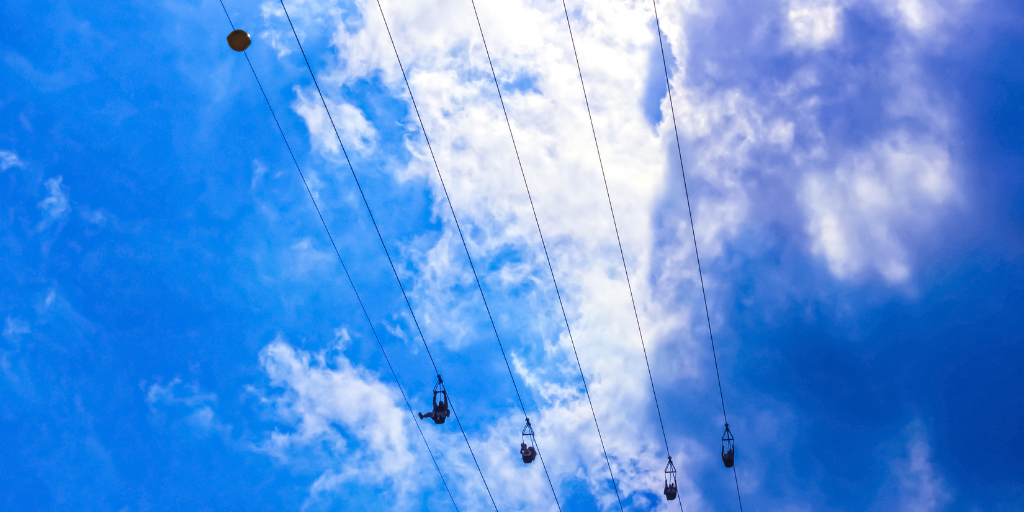In the ever-evolving landscape of adventure tourism, zipline companies have emerged as an exhilarating addition. Offering a unique blend of thrill and scenic beauty, these companies deliver unforgettable experiences for their customers. However, like any other business, zipline companies are not immune to the challenges of maintaining profitability. Changing customer preferences, intense competition, and the seasonal nature of the business can often pose hurdles.
Yet, with strategic planning, innovative thinking, and a strong focus on customer experience, it's possible for these businesses to soar high in terms of profitability. This article explores various strategies that zipline companies can adopt to enhance their financial performance while continuing to offer a thrilling experience to their customers.
The secret to a profitable zipline business lies in diversifying revenue streams. A business should consider going beyond simply selling tickets. Offering photo packages, merchandise, and food and beverage services can supplement income, and providing premium experiences such as night ziplining or VIP packages can create an allure for customers seeking something extra special.
Another avenue for increasing profitability is to expand into corporate and group packages. By tailoring experiences for corporate team-building activities, school trips, and other large group events, businesses can tap into a sector that frequently books in large numbers and may require additional services.
One cannot underestimate the power of a well-timed event. Hosting seasonal and themed events during holidays and peak seasons can attract customers seeking unique experiences. Halloween-themed ziplines, Christmas light zipline tours, or Valentine's Day couples packages are just a few examples of how creativity can ignite interest and boost sales.

Innovative Strategies for Zipline Companies
In an increasingly competitive market, customer loyalty is a vital asset. Implementing a membership system or a loyalty program encourages repeat customers and can help generate steady revenue. It also has the added benefit of fostering a community around the business, which can lead to valuable word-of-mouth promotion.
Strategic partnerships offer another route to profitability. By partnering with local hotels, travel agencies, or other tourist attractions to offer combined packages, a zipline business can attract tourists while enjoying the mutual benefits that come with strategic alliances.
An often underutilized strategy is investing in marketing and building an online presence. Harnessing the power of social media and online platforms can widen a business's reach to a global audience. User-generated content, such as photos or videos from the zipline experience, can prove to be a powerful marketing tool, as they provide authentic and engaging promotional material.
In today's world, businesses also need to be conscious of their environmental impact. Implementing eco-friendly practices not only promotes sustainable tourism but can also attract environmentally conscious customers. Moreover, this can potentially open up opportunities for green grants or partnerships.
Lastly, the business must never stop innovating. Investing in technology to enhance the zipline experience can lead to a significant increase in attractiveness to customers. The integration of virtual reality ziplining, interactive elements during the ride, or even educational components about local wildlife or history can transform a typical zipline ride into an unforgettable adventure.
It's important to remember that thorough evaluation of each strategy's potential costs and benefits is vital. Understanding the target audience before implementing any major changes is also essential. It might also be useful to test new initiatives on a small scale before rolling them out fully. In doing so, a zipline company can effectively navigate its way to profitability.

Thriving in the Zipline Business
The path to profitability for zipline companies, while challenging, is surmountable with innovative strategies and a customer-centric approach. By diversifying revenue streams, expanding into corporate and group packages, hosting seasonal events, implementing loyalty programs, building strategic partnerships, enhancing online presence, adopting eco-friendly practices, and constantly innovating the zipline experience, these businesses can successfully navigate the economic landscape.
However, it's crucial to remember that every strategy requires thorough evaluation and understanding of the target audience before implementation. Pilot testing new initiatives on a small scale can also be beneficial before a full-scale rollout. The adventure tourism industry is dynamic, and a zipline business must be ready to adapt and evolve to keep its customers thrilled and its revenues growing. The sky is truly the limit for those who dare to soar.
Planning a zipline installation? Need expert advice on zipline design?
Get started Today
Additional expert Information regarding Zipline technology
Interested to read more about Zipline technology and expert opinions?
- The Power of Zip Line Simulation Software
- Bi-Directional Zip Line Technology
- Zip Line Design: Components for a Complete System
- How a Zipline Feasibility Study Guarantees Success
- MAG Brake Trolley, the Magnetic Self-braking Zipline pulley
- Professional Zipline Engineering & Design services
- How to Launch a Zip Line Company
- The Science of Zipline Design and Engineering
- Zipline Mistakes You Don’t Know You’re Making
- Key elements: Zipline Design and Engineering
- Thinking of investing and operating a Zipline?
- Zipline Emergency Arrest Devices (EADs)
- The ZipCoaster - Fly through the air, dipping and twisting
- Pros and Cons of Different Zip Line Brakes
- Expert Tips for Zip Line Brake Installations
- Thinking of investing and operating a Zipline?
- Ingenious inventions. The curvy zip line













